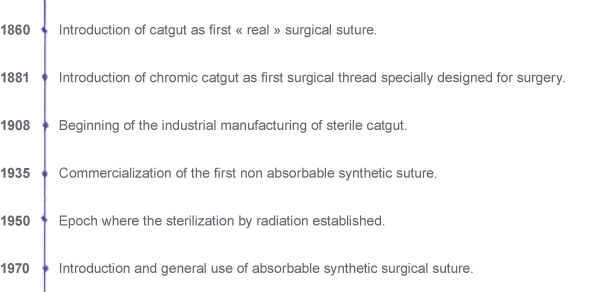The history of surgical thread

The earliest reports of surgical sutures come from ancient Egypt. Through very long time different materials such as vegetable fibres or animal material (hair and tendons) were used.
Until well into the 19th century the existing suture material as well as the instruments were often strongly infested with germs which increased the prevalence of infections resulting, very often, in death.
To remedy this problem, attempts were made to disinfect the equipment as well as the operating suite using among others carbolic acid or carbolic acid spray which, during the second half of the 19th century, led to the development of the “carbolic” catgut, and later, catgut chromic, who both were disinfected by carbolic acid.
The development of catgut has been described as follows: cat intestins, sheep intestins and eventually bovine intestins.
It was only at the beginning of the 20th century that the first actual sterile catgut was achieved whose industrial manufacturing started in 1909. The development of non absorbable synthetic sutures (Nylon) presented a progress in the development of surgical sutures. This progress was also extended to absorbable synthetic sutures in 1970.
Nowadays, besides the radiation sterilization (gamma rays) two other sterilization procedures are used : heat sterilization and chemical sterilization.